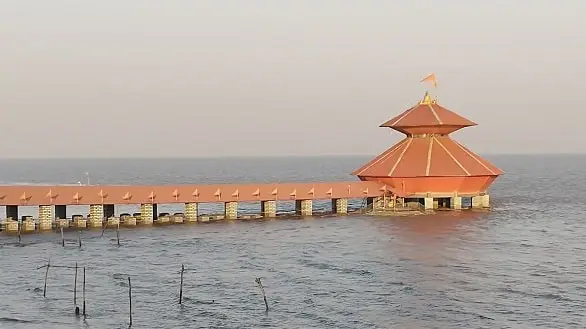One of Gujarat's most well-known temples is the Stambheshwar Mahadev Temple. Among India's many architectural marvels, this temple is one of the best examples. At this moment, the sea itself offers "Jal Abhishekam" to the Lingam of Lord Shiva.
This temple was founded on the teachings of Skanda Purana, amongst the 18 Hindu scriptures known as Puranas. The temple that disappears twice a day appears to be here. High tides occur at this time. The 150-year-old Shiva Lingam is submerged in water while Jal Abhishekam is performed. The temple's administration publishes Tide schedules that devotees use to plan their visits.
The Temple of Stambheswar Mahadev originally from Gujarat, Kavi Kamboi now resides in Kavi Kamboi. It has been said that this temple vanishes twice daily. It stays where it is. This is a very natural occurrence, much like the tides and sea oats. The hours of operation for Stambheswar Mahadev Temple are from 5:00 am - 9:00 pm.

With the arrival of high tide, the temple gradually disappeared beneath the waves. The month of Shravan is ideal for a trip to Stambheshwar Mahadev Temple.
Beginning in March and continuing through June, Stambheshwar Mahadev Temple experiences a dry and arid summer. It is amongst the hottest & driest states in India, with temperatures averaging 41 degrees Celsius during the day and 28 degrees Celsius in the evening. Some places, however, are open to visitors in the summertime. Temperatures in southern Gujarat are typically lower than in the state's northwestern regions.
The state's areas have a wide range of rainfall patterns. Areas in the north, such as Saurashtra and Kutch, receive a lot less precipitation than those in the south. But even in the dry season, rain falls in important Gujarati cities like Ahmadabad, Jamnagar, & Kutch.
The average annual rainfall for the state is 800 millimeters, while the average annual temperature is around 35 degrees Celsius. With a humidity level of 62%, it's possible that the weather will dampen some people's spirits. Tourists should probably wait until the monsoons have settled in before visiting these cities, as they suffer from a severe water deficit at the start of the season.
Temperatures in Gujarat range from about 12 degrees Celsius to about 29 degrees Celsius during the winter. Between October & February, the weather is consistently nice and warm, making for ideal temple visit.